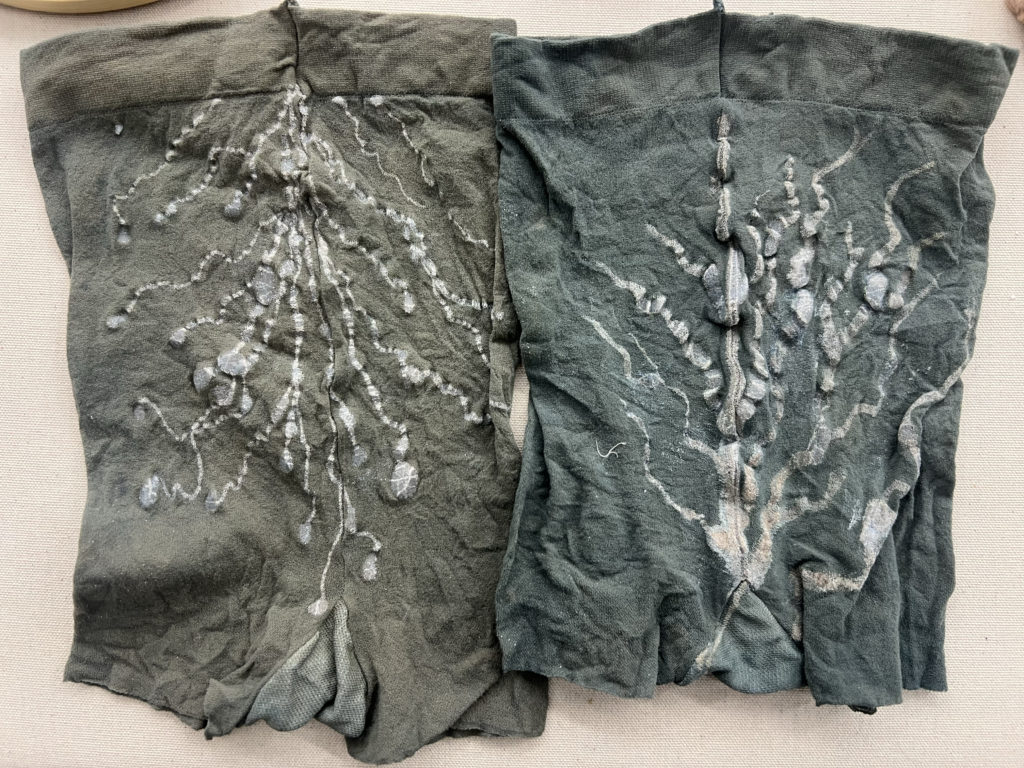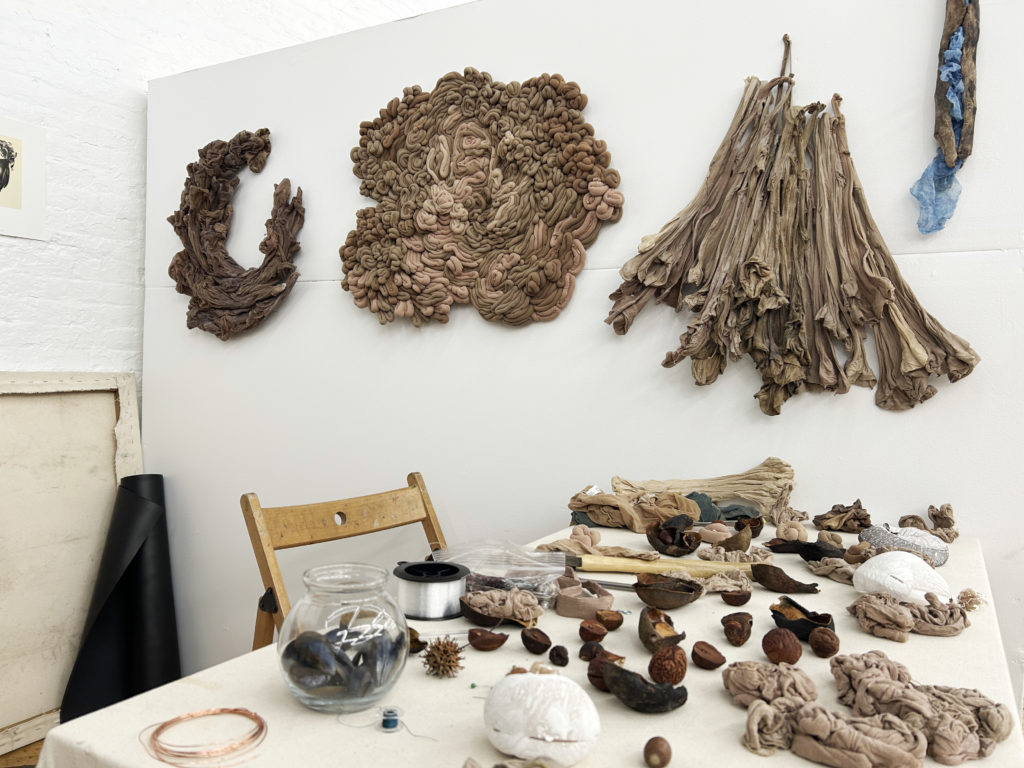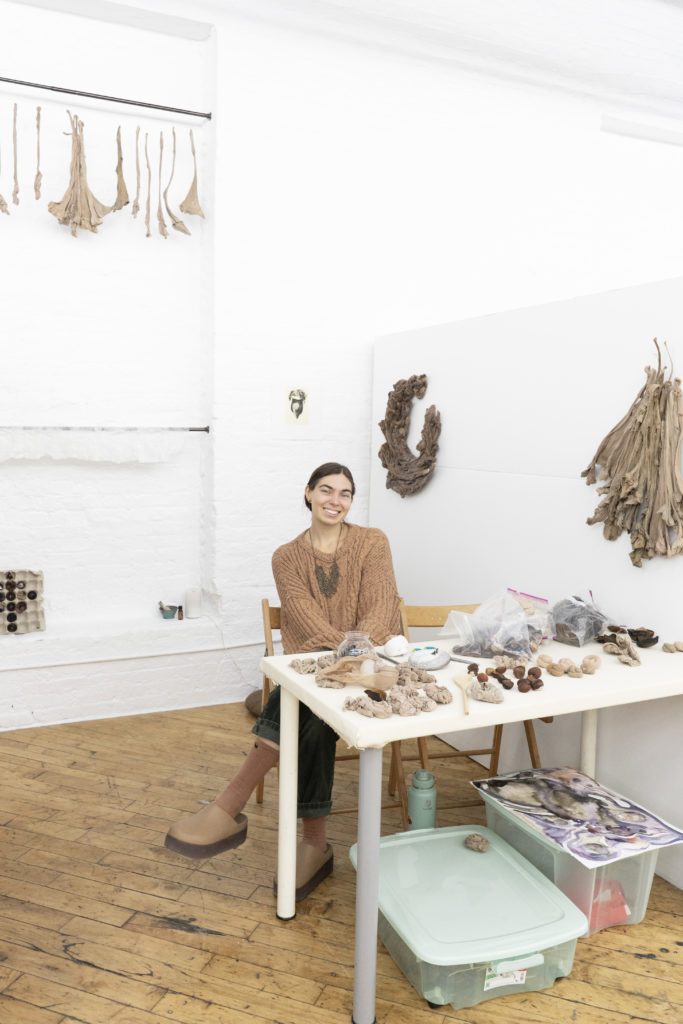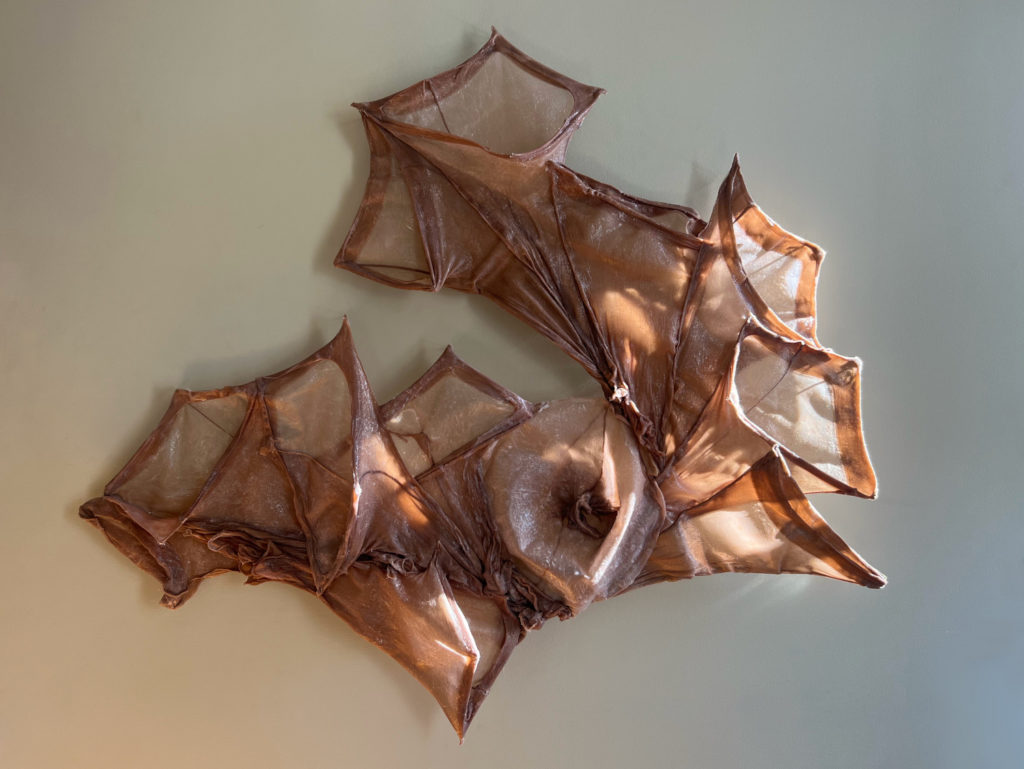AIR 16 Feature: Rose Malenfant
Jimmy Zhao, Artist Programs intern at TAC, got together with current AIR 16 resident Rose Malenfant:
Jimmy: Rose, you had a really ambitious summer and fall. What have you been working on?
Rose: Yes! I have been balancing a bunch of different projects, but I feel like that is the way to do it. They say to ride a bike, you have to be moving in order to keep your balance. So, there are levels of it that are healthy for me.
I have been working on my own studio practice, and, in addition to that, I curated a couple group exhibitions. The two recent ones are Semi-Permeable at Living Skin and Propagation: Suspended Roots at Studio 9D in Chelsea, Manhattan.
Whenever you get a group of artists together to explore concepts—of course, selfishly, they are concepts with common threads as my own practice—but seeing how other artists explored those ideas in their materiality and language was very eye-opening.
For Semi-Permeable, I was thinking about the body as an accumulation and filtration system, while Propagation examined how we continue to grow after severance from a life source.
Both shows took a lot of work, time, and energy, but they were very rewarding. They really connected and grounded me in my community, which was humbling. Needing to ask for help from people and receiving that support on a communal level—there is nothing more nourishing than that.
In addition to the curatorial projects and my own practice, I also work with the arts nonprofit, Beam Center. We do a bunch of projects in and out of schools and run internships. This past summer, leading into the fall, I led a textile internship for older high schoolers and younger college students on Governors Island. They learned textile basics, and it culminated in a fashion show as part of our Other Worlds Fair.
Being on Governors Island for my day job with Beam Center connected me with a lot of different artists. For example, on my lunch break, I would visit a studio, meet with an artist, and sometimes bring their work into a group exhibition later. It has been a beautiful intersectional buzz this past summer and fall.

Jimmy: That sounds really lovely. How have those experiences informed your studio practice? Can you tell us a little bit about what your practice entails, and how you built on these themes of body and regeneration?
Rose: My studio practice is very process-oriented. A big part of it is repetition, and it is founded in the body. I think about how we learn, break, and heal things through repetition.
I consider repetition in three lanes: the repetition involved in labor we do out of survival—something we do not necessarily consent to; the repetition of compulsion—those patterns or tendencies that arise from experiences but are not always healthy and can be harmful; and the repetition of ritual, where I try to transform or transfigure the first two into the latter, extracting ritual from repetition as an act of reclamation.
This involves thinking about these ideas at a chemical and molecular level in the body. It ties back to concepts explored in Semi-Permeable and Propagation, how our bodies have been industrialized and conditioned to operate like machines.
Through my work, I try to dissect these relationships. I think a lot about consumerism, our patterns of consumption, and how materials play a role in that. It is a form of mindful accumulation, where my body’s engagement transforms materials into final sculptures or series.

Jimmy: Can you speak about how these ideas take shape materially and manifest into forms?
Rose: Absolutely. Lately, I have been obsessed with nylon pantyhose. They are a very charged material. Before working with them sculpturally, I mostly drew and painted. However, using pantyhose added additional layers of narrative, they carry stories of the feminine body before I even touch them.
It creates a relationship between me and the material, rather than me just projecting ideas onto a canvas. Pantyhose symbolize perfectionism in women, industrial labor, mass production, and disposability. I use them in rituals to transform them—sometimes using my body, natural elements, or gravity as an armature.The final forms emerge through curing processes like marinating in silicone or bioplastic. I enjoy surrendering control to time, gravity, or material relationships.
Jimmy: How have the themes of natural and artificial evolved in your body of work?
Rose: I think a lot about grafting, creating impossible relationships between the natural and synthetic. There is a tree I love in Brooklyn that blooms pink and white flowers because one flowering tree was grafted onto another. It is a symbol of nature accepting something else into itself.
Recently, I learned that nylon has similar properties to protein fibers, so it can accept natural dyes like indigo. This discovery was a hopeful reminder that synthetic and natural materials can integrate. I have also been experimenting with avocado pits—tracking my consumption and their transformation over time. Once dried, they shrivel, split, and resemble vulvas, connecting back to themes of the feminine body. I plan to incorporate them as beads in my sculptures.

Jimmy: I also noticed bundles of egg cartons in your studio. Could you explain their significance in your investigation?
Rose: Egg cartons symbolize the industrialization of the feminine body. Hens naturally lay far fewer eggs than what we have manipulated them to produce. The repetitive cavities of industrial egg cartons reflect this forced monoculture and our extractive relationship with nature.
Jimmy: What do you hope to accomplish during your time at the Textile Art Center?
Rose: I hope to dive deeper into my practice, remain open, and invite new ideas. Conversations and access to new materials here have already expanded my work. I aim to exchange ideas with this community and contribute to others’ growth as well.
Jimmy: Lastly, what is coming up for you?
Rose: I am part of a group show with 4 other artists called Witchgrass at Tempest Gallery in December. I also led a communal indigo dye workshop, which will culminate in a public installation opening on December 14 at Arts Letters and Numbers in upstate New York. Beyond that, I am planning future curatorial projects, but they are in their early incubation stages.

Rose Malenfant is a multidisciplinary artist, educator and curator from New York, based in Brooklyn. Her sculptural practice is material and process oriented, centered in cycles of the body and environment. Rose uses a variety of techniques and materials including nylon pantyhose, bioplastic, silicone, gravity and time.
Her work has been exhibited by galleries throughout New York and internationally including El Barrio Art Space, Atlantic Gallery, the Factory LIC, Black Brick Project and Arts Letters and Numbers. She has received awards from The Art Students League of New York and the International Society of Experimental Artists. Rose is a member of the Textile Study Group of New York, an alumni of The Alternative Art School and SUNY New Paltz where she studied Visual Art and Visual Arts Education..
Rose was a recipient of Beam Center’s Artist in Residency Program on Governors Island where she continues to work as a project designer mentoring young artists through hands-on collaborative projects.
Rose is also curating upcoming exhibitions "Semi-Permeable" at Living Skin, Brooklyn, New York and "Propagation- Suspended Roots" at Studio 9D New York, New York.